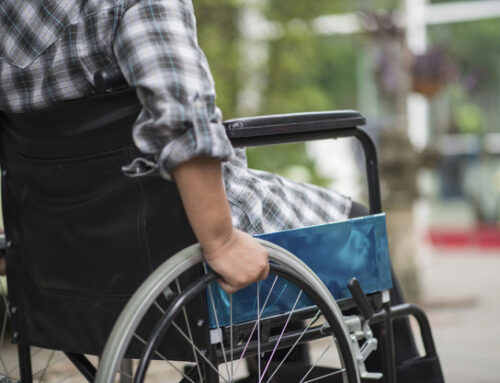Machado-Joseph Disease
Machado-Joseph disease (MJD), which is also called spinocerebellar ataxia type 3, is a rare hereditary ataxia. (Ataxia is a medical term meaning lack of muscle control.) The disease is characterized by clumsiness and weakness in the arms and legs, spasticity, a staggering lurching gait easily mistaken for drunkenness, difficulty with speech and swallowing, involuntary eye movements, double vision, and frequent urination. Some individuals also have dystonia (sustained muscle contractions that cause twisting of the body and limbs, repetitive movements, abnormal postures, and rigidity) or symptoms similar to those of Parkinson’s disease. Others have twitching of the face or tongue, or peculiar bulging eyes. Almost all MJD patients experience vision problems, including double vision or blurred vision, loss of the ability to distinguish color and/or contrast, and inability to control eye movements. Is there any treatment? MJD is incurable, but some symptoms of the disease can be treated. For those patients who show parkinsonian features, levodopa therapy can help for many years. Treatment with antispasmodic drugs, such as baclofen, can help reduce spasticity. Botulinum toxin can also treat severe spasticity as well as some symptoms of dystonia. Speech problems and trouble swallowing can be treated with medication and speech therapy. Physiotherapy can help patients cope with disability associated with gait problems. Physical aids, such as walkers and wheelchairs, can assist with everyday activities. What is the prognosis? The severity of the disease is related to the age of onset, with earlier onset associated with more severe forms of the disease. Symptoms can begin any time between early adolescence and about 70 years of age. MJD is a progressive disease, meaning that symptoms get worse with time. Life expectancy ranges from the mid-thirties for those with severe forms of MJD to a normal life expectancy for those with mild forms. The cause of death for those who die early is often aspiration pneumonia. What research is being done? The National Institute of Neurological Disorders and Stroke (NINDS) conducts MJD research in its laboratories at the National Institutes of Health (NIH) and also supports MJD research through grants to major medical institutions across the country. Ongoing research includes studies to better understand the genetic, molecular, and cellular mechanisms that underlie inherited neurodegenerative diseases such as MJD. Other research areas include the development of novel therapies to treat the symptoms of MJD, efforts to identify diagnostic markers and to improve current diagnostic procedures for the disease, and population studies to identify affected families. To obtain full text: http://www.ninds.nih.gov/disorders/machado_joseph/machado_joseph.htm
Machado-Joseph disease (MJD), which is also called spinocerebellar ataxia type 3, is a rare hereditary ataxia. (Ataxia is a medical term meaning lack of muscle control.) The disease is characterized by clumsiness and weakness in the arms and legs, spasticity, a staggering lurching gait easily mistaken for drunkenness, difficulty with speech and swallowing, involuntary eye movements, double vision, and frequent urination. Some individuals also have dystonia (sustained muscle contractions that cause twisting of the body and limbs, repetitive movements, abnormal postures, and rigidity) or symptoms similar to those of Parkinson’s disease. Others have twitching of the face or tongue, or peculiar bulging eyes. Almost all MJD patients experience vision problems, including double vision or blurred vision, loss of the ability to distinguish color and/or contrast, and inability to control eye movements. Is there any treatment? MJD is incurable, but some symptoms of the disease can be treated. For those patients who show parkinsonian features, levodopa therapy can help for many years. Treatment with antispasmodic drugs, such as baclofen, can help reduce spasticity. Botulinum toxin can also treat severe spasticity as well as some symptoms of dystonia. Speech problems and trouble swallowing can be treated with medication and speech therapy. Physiotherapy can help patients cope with disability associated with gait problems. Physical aids, such as walkers and wheelchairs, can assist with everyday activities. What is the prognosis? The severity of the disease is related to the age of onset, with earlier onset associated with more severe forms of the disease. Symptoms can begin any time between early adolescence and about 70 years of age. MJD is a progressive disease, meaning that symptoms get worse with time. Life expectancy ranges from the mid-thirties for those with severe forms of MJD to a normal life expectancy for those with mild forms. The cause of death for those who die early is often aspiration pneumonia. What research is being done? The National Institute of Neurological Disorders and Stroke (NINDS) conducts MJD research in its laboratories at the National Institutes of Health (NIH) and also supports MJD research through grants to major medical institutions across the country. Ongoing research includes studies to better understand the genetic, molecular, and cellular mechanisms that underlie inherited neurodegenerative diseases such as MJD. Other research areas include the development of novel therapies to treat the symptoms of MJD, efforts to identify diagnostic markers and to improve current diagnostic procedures for the disease, and population studies to identify affected families. To obtain full text: http://www.ninds.nih.gov/disorders/machado_joseph/machado_joseph.htm




